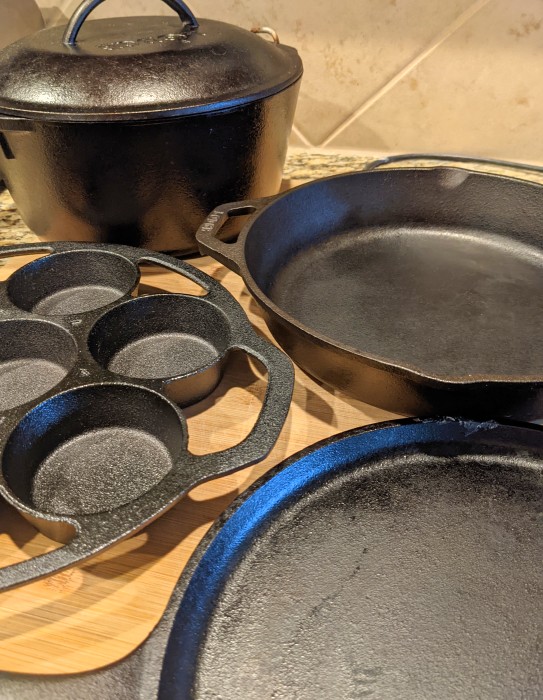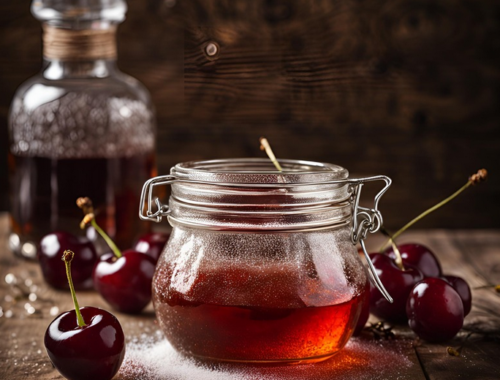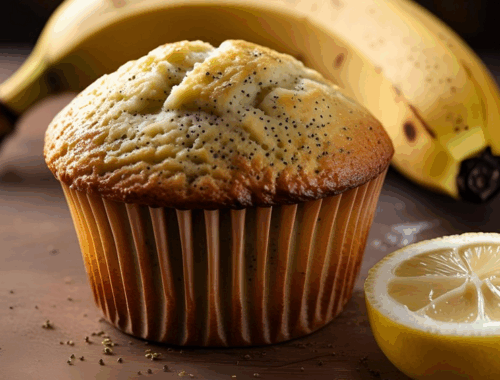
Seasoning our Cast Iron Cookware
If you have begun doing your research on how to season cast iron cookware, you’ll likely see that there are many different techniques and recipes that people will use and recommend. After many years of maintaining our cast iron cookware, and lots of trial and error with various different oils and techniques, this is now our go-to recommended method.
“Have you tried XYZ method?” — We have tried many different oven, stove-top, and even grill methods of heating. We have also tried many different oils: avocado, safflower seed, special cast-iron specific treatments, etc. We have found this method, with Crisco, to be the most consistent, maintain the strongest and smoothest seasoning layer, and be the least prone to flaking and chipping (and nobody wants flakes of iron or plasticized oil in their food).
Please note: We do not use Crisco as our day-to-day cooking oil, instead we use avocado oil for our typical high temperature cooking, or butter for low temperature cooking.
Our cast iron favorites:
As an Amazon Associate I earn from qualifying purchases.
Enjoy my recipes and patterns and want to support my site? Want to get a gift for yourself or others at the same time? Check out my Shop! New patterns, supplies, and goodies added regularly.

Seasoning and Maintaining Cast Iron Cookware
Equipment
- oven
- rag
- clean cast-iron pots or pans
Ingredients
- Crisco
Instructions
Initial Seasoning
- Note: This is assuming new or clean cast iron cookware, and does not include steps for restoring or stripping cast iron.
- Place clean cast iron into your oven and heat your oven to 300°F.
- Once at 300°F remove pans from oven and use a rag to apply an even layer of Crisco over all surfaces (including handles and exteriors).
- Return pans to 300°F oven and heat for 15 minutes. Remove the pans again and wipe them down to remove any excess oil with the same rag.
- Return pans to oven and raise heat to 400°F. Heat for 2 hours.
- After time has passed turn off the heat and allow the pans to cool in the oven.
- If desired, repeat the entire process a second time for an additional layer of seasoning.
General Maintenance
- Wash running under hot water. Use a plastic scraper (such as a Lodge plastic scraper) to remove any stuck on food and wipe with a non-abrasive towel. If the pan is particularly greasy, use a small bit of soap.
- The water should bead off of the surface smoothly. If water is no longer beading off the surface then heat over medium-high heat, apply a light layer of Crisco to the cooking area, and heat until the pan just starts to smoke. Once smoking, remove from heat.
Starting Over
- Should you ever receive a poorly seasoned pan, or would like to remove any previous seasoning methods, you can remove any existing seasoning by placing the pans in the oven and turning on oven cleaning mode. This will burn off any existing seasoning layer.
- Wipe down any residue thoroughly, and proceed to complete at least two layers of Initial Seasoning as described previously to protect the pan from rust.
Notes
- For an initial seasoning it is highly recommended to have windows open and good ventilation to dissipate the smell.
- For the longevity of your cast iron pan, it is recommended to avoid the following as they can strip the seasoning (for all of the following I would recommend an enameled cast iron pan). If you do happen to strip the seasoning, simply follow the steps of the initial seasoning or a maintenance seasoning to continue to protect your dishes and keep the non-stick functionality.
- Cooking acidic foods (such as tomatoes)
- Extended boiling (such as soups)
- Bacon (Many recommend this as a way of seasoning due to the high fat, however we’ve found that it’s more likely to strip a light layer of seasoning as you’re just getting started)

You May Also Like

Polish Cherry Brandy (Wisniak)
December 30, 2020
Lemon Poppy Seed Banana Muffins
August 6, 2025

